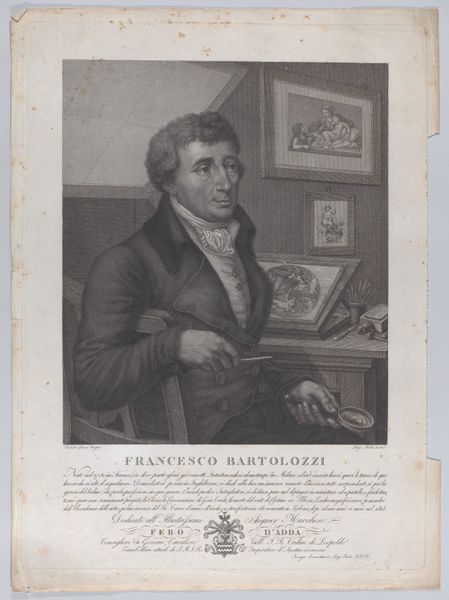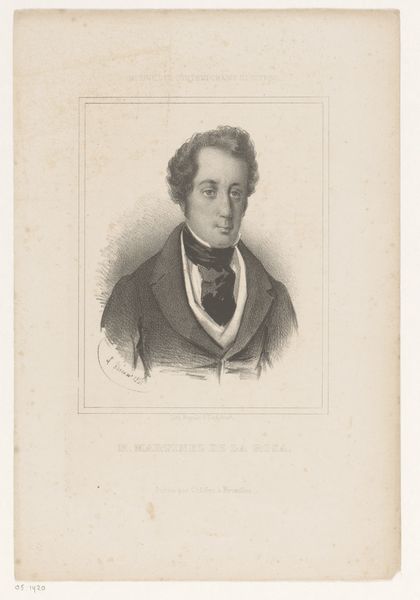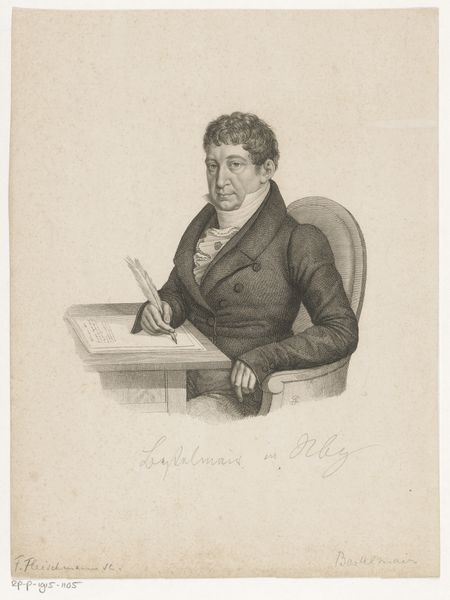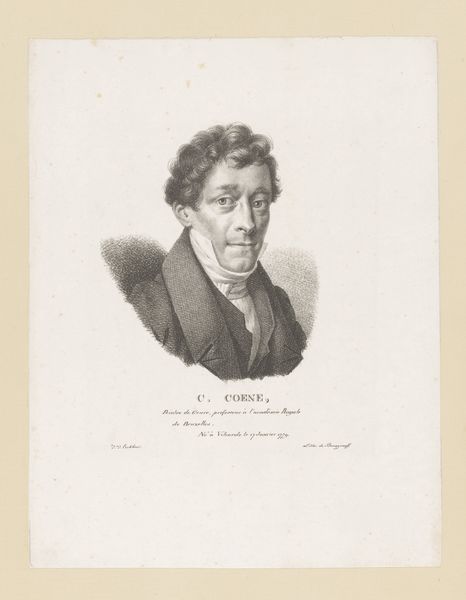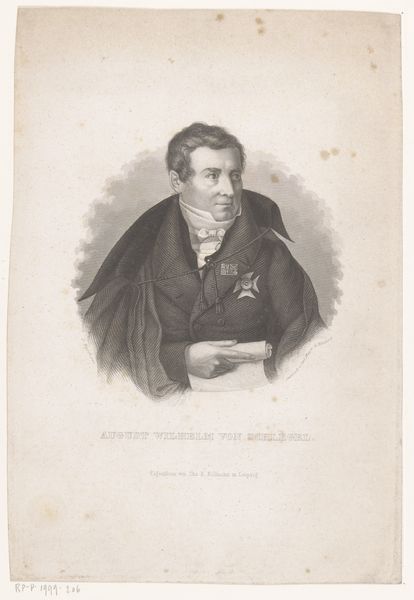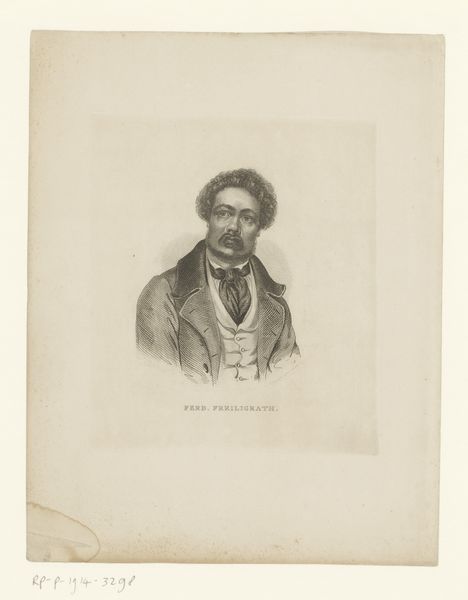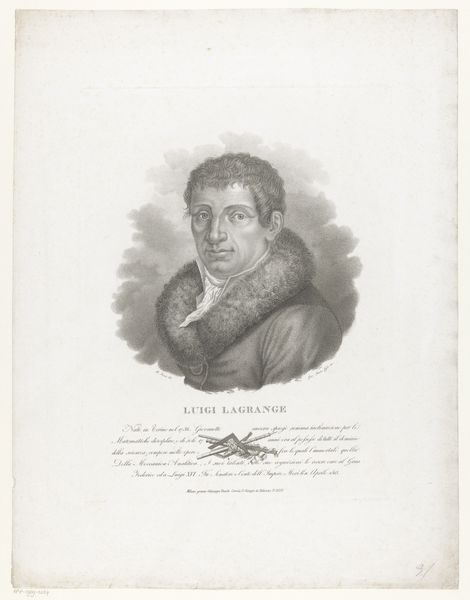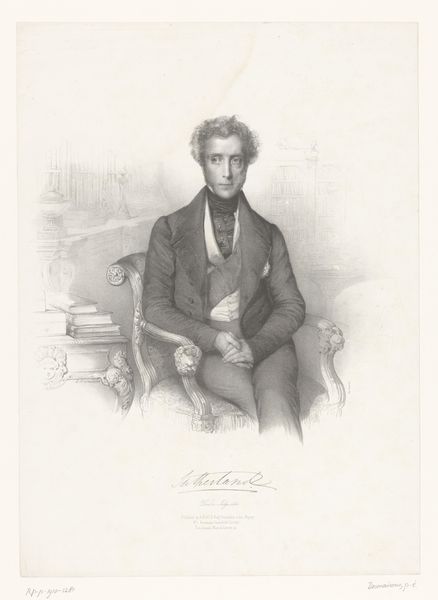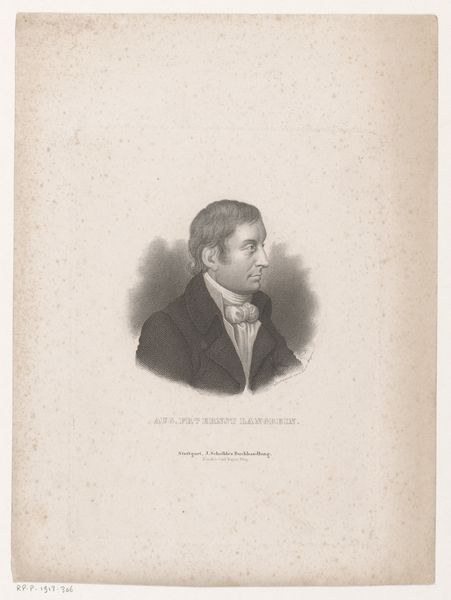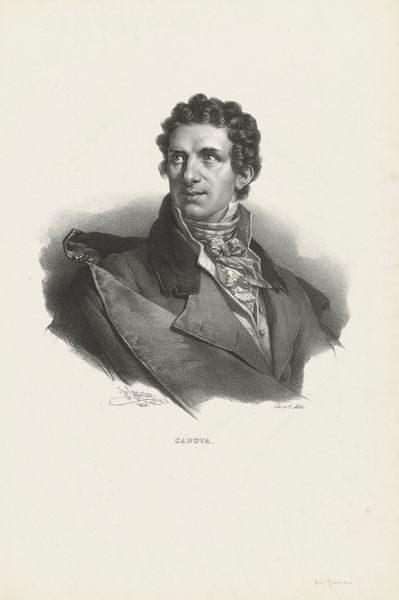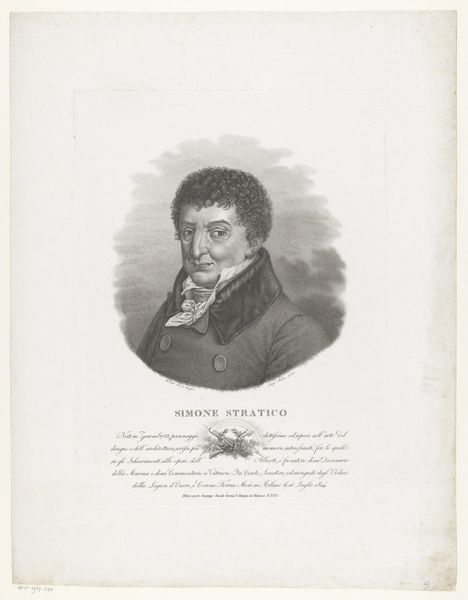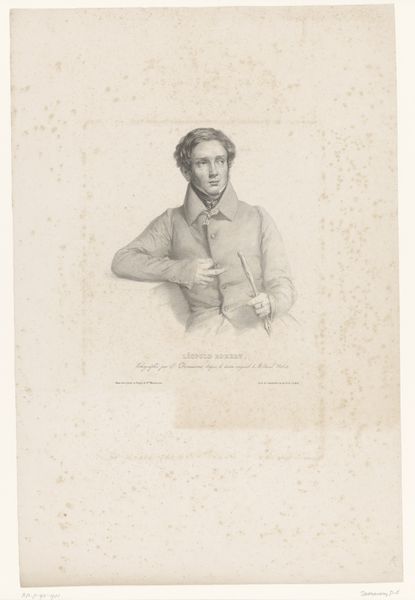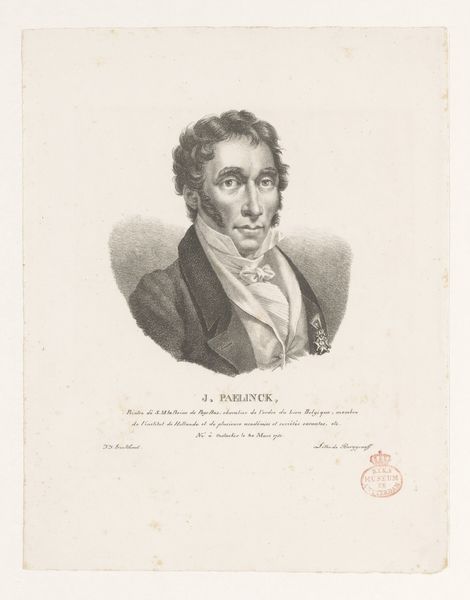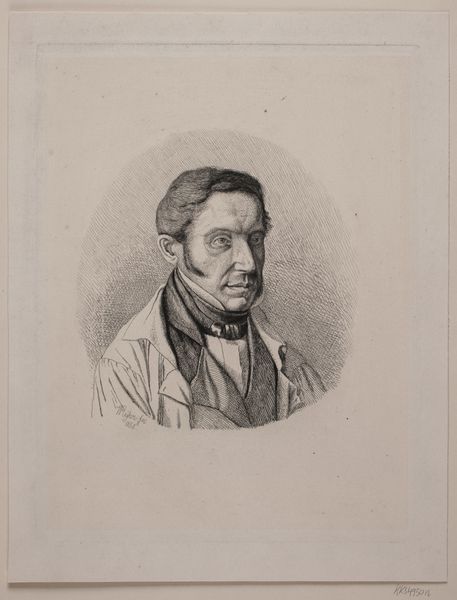
Portrait of Luigi Lagrange, seated with an easel behind him at right with a mathematical equation 1827
0:00
0:00
drawing, print, graphite, engraving
#
portrait
#
drawing
#
neoclacissism
# print
#
coloured pencil
#
graphite
#
engraving
Dimensions: Plate: 19 7/16 × 14 5/8 in. (49.4 × 37.2 cm) Sheet: 20 5/8 × 15 3/16 in. (52.4 × 38.5 cm)
Copyright: Public Domain
Luigi Rados created this print of Luigi Lagrange in Italy, during the late 18th or early 19th century. It depicts Lagrange, a renowned mathematician, seated confidently with an easel displaying a complex equation behind him. The image creates meaning through several visual and cultural codes. The mathematical equation and the tools of artistic production, such as the easel and writing implements, emphasize Lagrange’s intellectual and creative prowess. During this period, institutions such as academies and scientific societies played a crucial role in shaping intellectual life. Lagrange was a prominent member of several such institutions, reflecting the importance of these networks in fostering scientific progress. The portrait, therefore, comments on the social structures of its time, celebrating the achievements of individuals within established institutions. To fully understand this artwork, historians often consult archival materials, correspondence, and institutional records to contextualize the subject's life and achievements. Art becomes meaningful through social and institutional contexts.
Comments
No comments
Be the first to comment and join the conversation on the ultimate creative platform.
